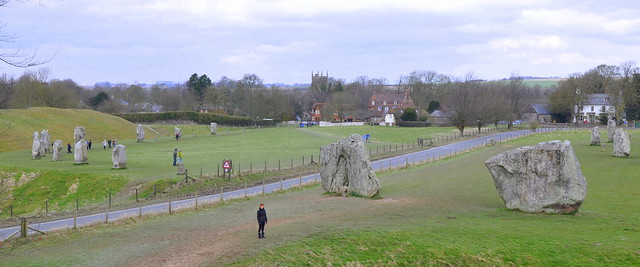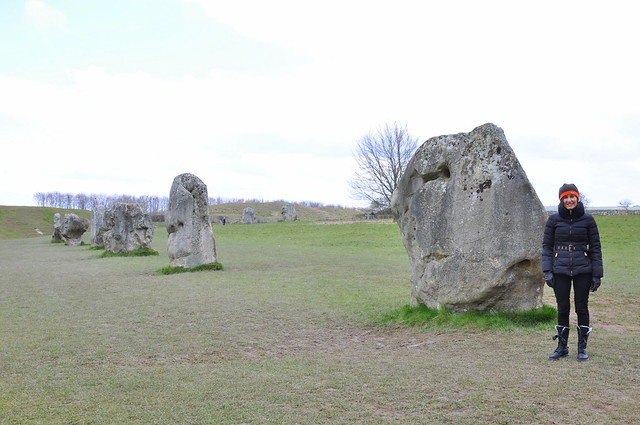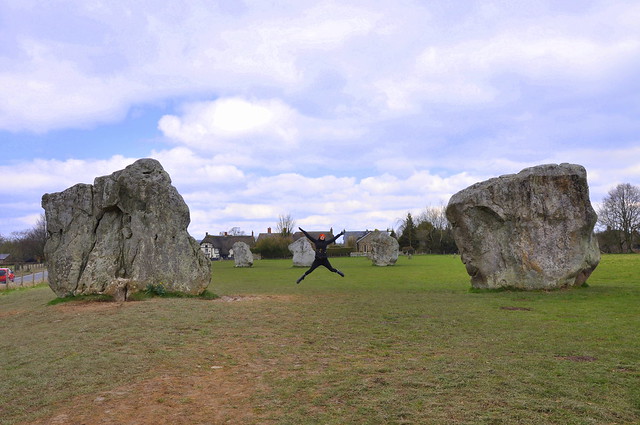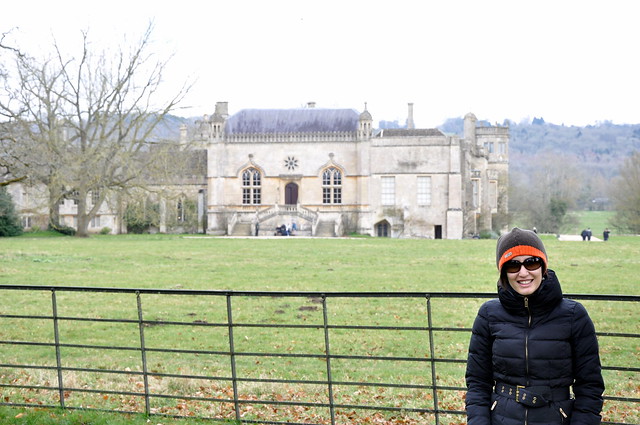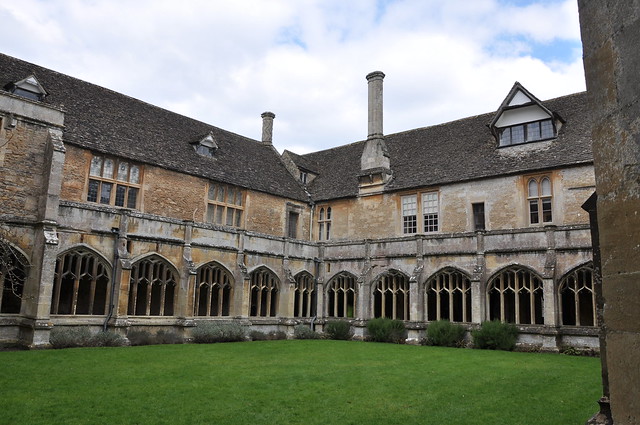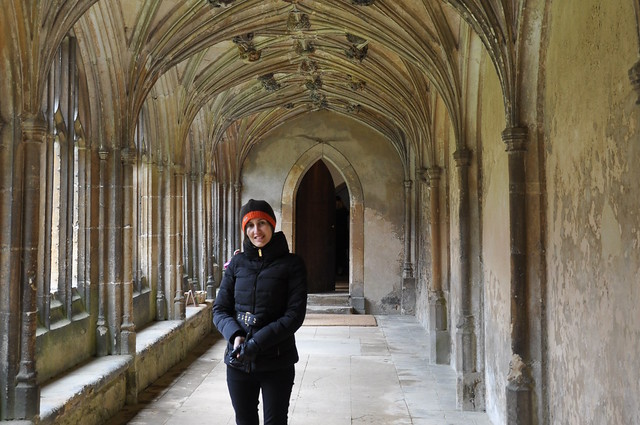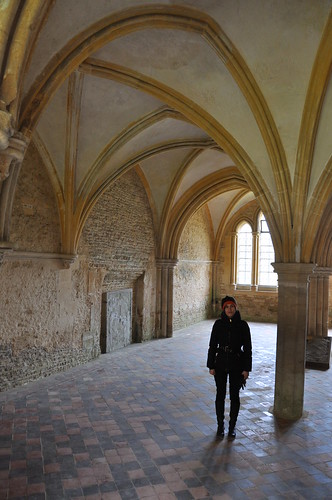For Easter this year, we wanted to go on a wee roadtrip and see some more of this country. We’ve made several trips around England, 3 to Scotland but only 1 to Wales. We’d heard that Pembrokeshire in the South West of Wales was a beautiful part of the country, so loaded the car and head off.
It’s a 5 hour drive to Tenby in Pembrokeshire where we were staying, so we planned a couple of stops on a cold and sunny Good Friday. First stop: Avebury, home to the largest stone circle in the world. It’s a pretty amazing site!
The whole stone circle has a diameter of about 384m and dates from around 2300 BC , between the first and second phase of construction of Stonehenge. The site originally consisted of an outer circle of 98 standing stones up to 3m to 6m in length, many weighing up to 20 tonnes.
Then surrounding those stones is another circle of a 5.5m-high earth bank and a 6m-to-9m-deep ditch. You can see the bank behind this stone below. Rob unfortunately twigged his knee with this leap, and was limping the rest of the weekend. Getting old, Rob!
The southeast sector of the whole setup starts with the huge portal stones marking the entry to the circle. These stones are just huge!
Avebury is great place to visit – you only pay for parking and the cafe and pub are tops! But we were only there for an hour or so, before continuing onto our next sight – Lacock Abbey!
Rob made many jokes about the name of the place for the rest of the afternoon. Typically Rob and entertaining.
The abbey was founded as an Augustinian nunnery in 1232 by Ela, Countess of Salisbury. After the Dissolution (when Henry VIII disbanded most abbeys, nunneries and such in the 16th century), the abbey was sold in 1539 to Sir William Sharington. He converted the nunnery into a home, demolished the church, tacked a tower onto the corner of the abbey and added a brewery. Mission!
This building is a mixture of the very old, and facades that were fashionable in Tudor and Elizabethan periods. You can see the tower in the right most corner at the back.
We were interested in the abbey’s beautiful cloisters, which were the oldest part of the building. Sir William had redone the interior of the most of the building otherwise. The cloisters were quaint and definitely old.
But some of you might’ve guessed, we were really there because Lacock Abbey had been used in various Harry Potter films! The abbey cloisters were the perfect location for some of Hogwart’s school corridors. This screen capture below is from Harry Potter and the Chamber of Secrets, and Harry has just left Professor Lockhart’s room after serving detention and hears the basilisk.
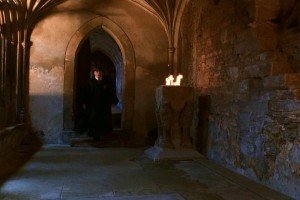
This is the same corridor! The film missed out on using the decorative ceiling in their shots, I think, but emphasised the distressed walls.
The abbey was acknowledged at being used for various movie scenes, but it turns out most of them were filmed at Durham Cathedral! We visited Durham Cathedral last year without realising its significance, so will have to do a blog post now about it now.
Regardless, another scene that was filmed at Lacock Abbey was all the Mirror of Erised scenes, where Harry finds and explores the mirror that shows him his parents still alive.
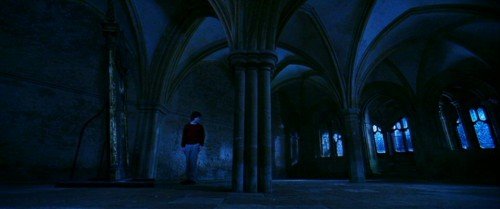
This was filmed in the Chapter House – a room where all the nuns would meet every day for meetings. The room is unaltered since the 16th century when it was constructed.
We only paid for the cloisters ticket (it was more expensive to view the rest of the property) but you can visit Snape’s original Potions Classroom if you get the extended ticket.
It’s a beautiful wee place that I’d recommend you visit if you’re in the area. The whole house has quite an interesting history, but we needed to get on the road again.
Wales, here we come!

